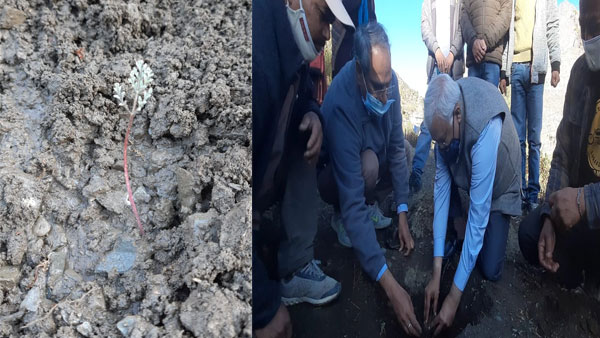
In a first, Heeng is being cultivated in India, here is why
New Delhi, Oct 21: Indians are known for their use of spices in foods. Spices here are as valuable as other nutrients for people. For the first time in India, scientists have started cultivating heeng or asafoetida in the Himalayas.
Heeng is one of the common ingredients used in Indian households and the substance is also used for its medicinal properties.

Scientists at CSIR-Institute of Himalayan Bioresource, Palampur (IHBT) have already planted the sapling in Lahaul valley, Kwaring village of Himachal Pradesh last week and are on a mission to grow heeng in the Indian Himalayas.
Why heeng is being cultivated
Asafoetida is one of the top condiments and is a high-value spice crop. India imports about 1,200 tonnes of raw asafoetida annually from Afghanistan, Iran and Uzbekistan and spends approximately USD 100 million or Rs 600 crore per year for it.
Ferula asafoetida is a herbaceous plant of the umbelliferae family. It is a perennial plant whose oleo gum resin is extracted from its thick roots and rhizome. The plant stores most of its nutrients inside its deep fleshy roots.
What are the growing conditions and previous attempts
Scientists have found that a few areas in Himalayan region provide proper climatic conditions for asafoetida to cultivate and grow.
According to the report, in 2017, IHBT and NBPGR came up with an experimental project idea that focused on cultivating heeng in the Himalayas.
The seeds were brought from Iran and NBPGR kept it for research purposes.
But to the dormant nature of the seeds, its germination became a challenge. After a lot of work has been done on this, it was found that seed's have adapted techniques that allow them to survive in desert conditions.
There, the seeds were subjected to a number of tests while being kept under quarantine, to rule out fungal or infectious diseases, possibility of pest attacks and other adverse effects to an area if these seeds were cultivated in fields. This process can take up to two months.
Recommended Video
The plant can endure a maximum of 35 and 40 degree and a minimum temperature of minus 4 degree. Such conditions are being given to the seeds for them to germinate.
At this Palampur institute, the seeds were studied, and then put to test to see if they would germinate under a controlled laboratory set-up.
According to the reports, the experiment is likely to be extended to regions in Ladakh and Uttarakhand.


 Click it and Unblock the Notifications
Click it and Unblock the Notifications


































